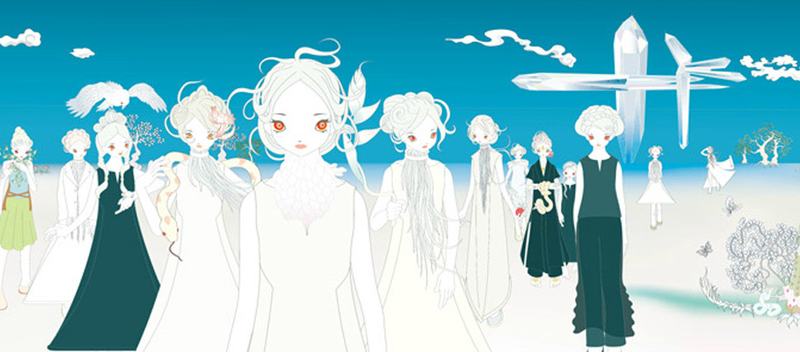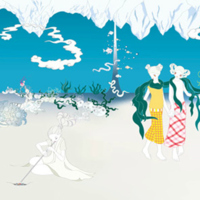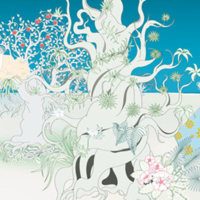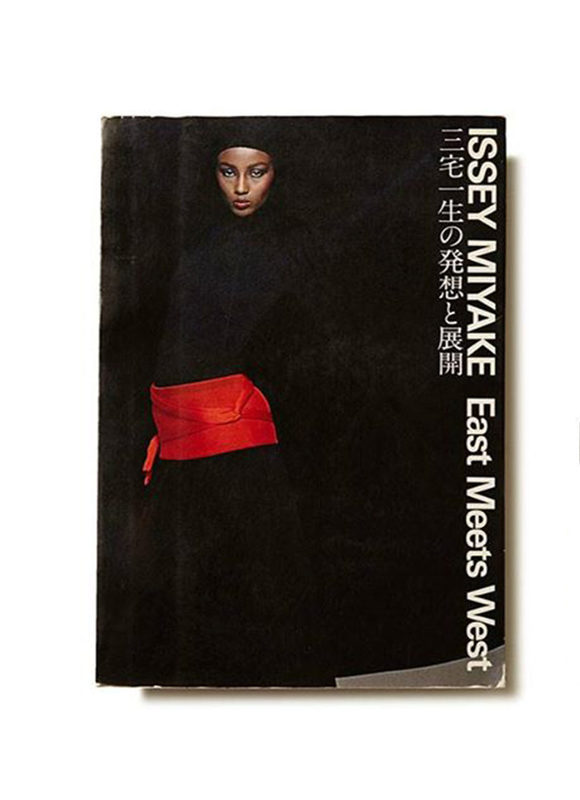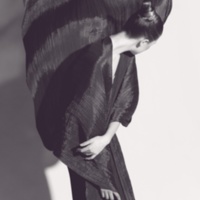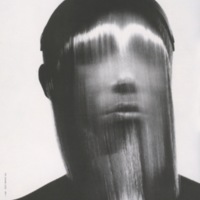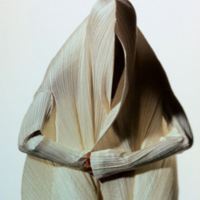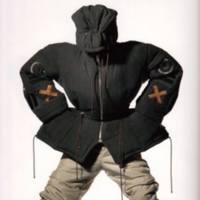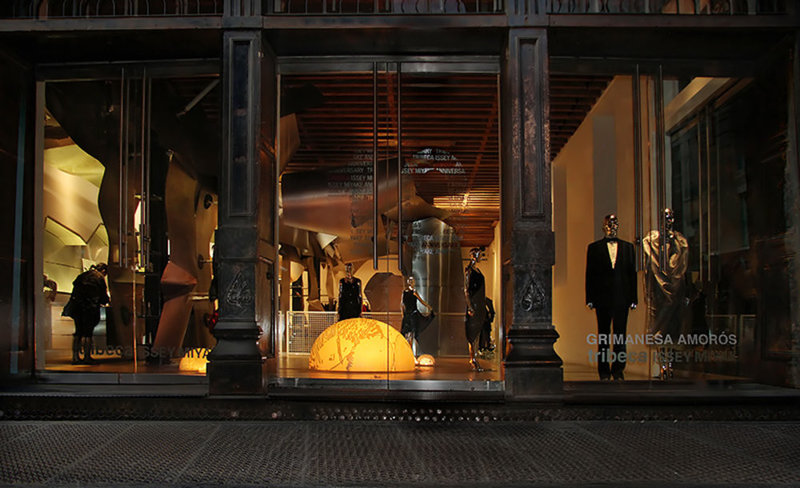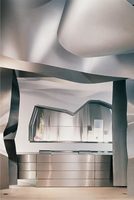Japanese Modernism Across Media
Fashion Meets Art
Rather than appealing directly to consumers through overt advertising, a number of renowned Japanese designers have sought to create images or other vehicles that convey their own creative concepts. Miyake was one of the first Japanese designers to adopt exhibition as an expressive medium, beginning with "Issey Miyake: Bodyworks" in 1983, followed by "Energies," presented at the Stedelijk Museum, Amsterdam, in 1990, and many more to come. He has had one-man exhibitions at the Musee des Arts Decoratifs in Paris, Tokyo’s Museum of Contemporary Art, The National Art Center in Tokyo and Berlin’s Vitra Design Museum. What Issey Miyake has achieved outside the realm of fashion makes him a designer in a broader sense of the word.
The latest Issey Miyake exhibition, "The Work of Miyake Issey," opened on March 16, 2016 at The National Art Center in Tokyo. The space is divided into three rooms. In Section A and B whose space is designed by Tokujin Yoshioka, Miyake’s clothes are exhibited on the new “Grid Bodies” especially designed by Yoshioka for the exhibition. The Graphic designer Taku Satoh’s display design (Section C) functions as a place of discovery where viewers can both enjoy as well as gain a deeper understanding of Miyake’s approach to making clothes.
Aside from being invited into the museum space, Issey Miyake has actively collaborated with various artists, such as Cai Guoqiang, Yasumasa Morimura and Yayoi Kusama. For instance, he once commissioned Chiho Aoshima to create an Issey Miyake commercial, later titled The Red-Eyed Tribe (2000). In the 2001 "Superflat" exhibition at the Museum of Contemporary Art Los Angele, Aoshima scaled up the painting to the size of a billboard. Artists presented in "Superflat" work between the established boundaries of their respective genres. In the exhibition, fine art meets commercial art. Painting meets illustration. And, art meets fashion. The wide range of activity within the exhibition is a direct challenge against the traditional borders and hierarchies within cultural genres.
In 1978 Miyake published the book Issey Miyake East Meets West, demonstrating a clear understanding of the importance of print media. Since then, he has continued to publish one groundbreaking book after another, often featuring the work of renowned American photographer Irving Penn.
One of the most influential images Miyake has made in his career is the cover photograph of the 1982 February issue of Artforum,which features a Rattan-vine Body of his design. Fashion, for the first time ever, is featured on the cover of an art magazine. The special issue at its time of publication instigated shock and protest. In the articles, art critics Ingrid Sischy and Germano Celant argue that the "changing language of the avant-garde and the vulgate" suggests that art had become part of a larger system of visual culture and communication that fashion should be included in, as a parallel.
In addition to moving into the art space, Miyake also transforms retail space into art space. “tribeca Issey Miyake,” for instance, is a joint architecture project with Frank Gehry and his protege Gordon Kipping. Set against the backdrop of a landmarked cast-iron building in the TriBeCa neighborhood, New York, from which it takes its name, the store features the titanium sculpture by Frank Gehry. Most importantly, the store has morphed into an art space for up-and-coming and established artists, as well as lectures and performances. The store has already featured artists such as Azuma Makoto, Yazmany Arboleda, Ian Wright, Kimiko Yoshida, pianist Leif Ove Andsnes, event by Performa, and a lecture by designer Yves Béhar.
During the 2011 holiday season, as part of its 10-year anniversary celebrations, tribeca ISSEY MIYAKE presented “Uros” – a lighting sculpture installation by Peruvian artist Grimanesa Amorós. The project was part of a series of works encapsulating the natural elegance of sea foam and totora reeds used for building the floating Uros Islands from Lake Titicaca in Puno, Peru.
This film, featuring a performance of the Aomori University Men's Rhythmic Gymnastic Team, is directed and produced by Issey Miyake. “I like dance. I like exercise-people with energy, kids, anything that moves. I make nothing of the distinctions between classical, modern and the rest. I just want to see the best. Humankind’s finest object is the human body, enjoying it our greatest pleasure.” Miyake had also collaborated with choreographer William Forsythe on The Loss of the Small Detail in Frankfurt.
When fashion meets art, as Ginger Gregg Duggan suggests, the dreary retail scene of the mid-1990s was transformed into “a glorious landscape of designer-led mini collections, groovy curated boutiques, naughty and haughty niche publications and the savviest customers in fashion’s history," - hence the birth of a happy global habitat, where fashion, architecture, design and art coexist. Here, a garment can be appreciated as sculpture. A fashion show is interchangeable with performance art.
Issey Miyake is undoubtedly one of the forerunners of this phenomenon, which has by now cultivated an ease and a willingness among contemporary artists and designers to work across media to make lasting personal statements. Through various interactions with the art world, Miyake has adopted a role of “designer-as-artist.”
When closely examined from the material, the ethnic and the commercial perspectives, Issey Miyake can be viewed as a Japanese fashion designer who is, in the meantime, not just a Japanese fashion designer, transcending binaries, breaking boundaries.
